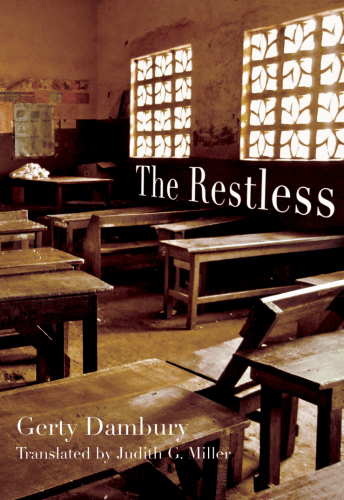
The Restless
کتاب های مرتبط
- اطلاعات
- نقد و بررسی
- دیدگاه کاربران
نقد و بررسی

November 15, 2017
A schoolgirl seeks answers when her city explodes after long-simmering tension.Emilienne is the daughter of a bureaucrat in French-occupied Guadeloupe in 1967. The youngest of nine siblings--all named for their ambitious yet ineffectual father--she is her daddy's princess. Her family regards the 9-year-old as precocious, in need of protection. Outsiders consider her disarming, a girl who freely communes with the dead. Because of this, Emilienne serves as the novel's medium, calling upon those who have passed for answers after she witnesses unspeakable violence. The novel is based on a real event that occurred in Pointe-a-Pitre--three days in May when ongoing negotiations between bureaucrats and a construction workers' union devolved into the massacre Emilienne witnesses. Multiple voices, living and dead, are woven throughout, following the form of a Creole square dance called a quadrille. The rich assemblage of perspectives gives a pulse to an event formerly unacknowledged in French history. The larger backdrop to the story is the way imperialism grates in the present, affecting everyone from the innocent to the ignorant to the complicit. On one hand, there is Emilienne's beloved schoolteacher, Madame Ladal, who disappears following a classroom visit from a man who makes sinister assurances: "Don't mind me, children. I didn't come here for you." On the other is Emilienne's Uncle Justin, who declares, "I didn't even know anything was going on in La Pointe. Not a clue." In between are the silently compliant and selective snitchers, whatever brings the greater reward. Translated from the French by Miller, Dambury's ear for dialogue buoys her novel, though the labored use of the quadrille as an organizing device is a distraction.A chorus of voices brings humanity to a little-known moment in Caribbean history.
COPYRIGHT(2017) Kirkus Reviews, ALL RIGHTS RESERVED.

December 18, 2017
Set in 1960s French-governed Guadeloupe, Dambury’s incisive debut addresses the political and racial unrest that violently comes to a head on May 26, 1967. Nine-year-old Émilienne is waiting for her Papa to come home—she has many questions for him, the most urgent being: why did her schoolteacher disappear? Over the course of three days, Émilienne struggles to accept that her beloved teacher has been taken away and is likely to not return. Her father, meanwhile, has not yet returned home. The people of Guadeloupe have been swept up in the turmoil that began on the 24th in the capital, Pointe-à-Pitre, with workers protesting wages, and reached a boiling point two days later when police began shooting at the protesters. Ghosts—including a neighbor who died two years earlier and an uncle—relay these events to Émilienne as she waits at her house, providing historical context as well as their own personal stories. In the book’s prologue, Dambury notes that the number of casualties during the unrest was totaled at five until 2016, when official documents were declassified that showed more than 100 people were seriously wounded or killed. Dambury’s essential take on the event offers a fresh and personal perspective, incorporating multiple perspectives and a child protagonist without sacrificing nuance, and gives the stage to those too long overlooked in this tragedy.

Starred review from January 1, 2018
In May 1967, a protest in French-ruled Guadeloupe escalated into a night of indiscriminate killing by military and police. Nine-year-old Emilienne, distraught at her teacher's disappearance, questions how and why. Mirroring the structure of the Caribbean quadrille (a square dance), four other characters' stories are interspersed with that of Emilienne, who waits for her father and worries for her teacher. Emilienne's eight brothers and sisters, all of whose names begin with Em, form a chorus and call out the transitions between the dancers. Dambury's experience as an acclaimed playwright is evident in that this is a novel of voices, with compelling dialogue and the direct addresses of the quadrille dancers resembling dramatic monologues. In an author interview, Dambury reminds us that France, like all nations, is built on inequality. The third dancer is a worker locked in unending struggle with his boss for fair wages, part of a national conflict that led to the violent night. The second dancer is a gay man who hanged himself after being outed by a woman who confused homosexuality with pedophilia. Dambury's important novel seeks to empower Guadeloupe's oppressed by giving them voices and space to speak for themselves.(Reprinted with permission of Booklist, copyright 2018, American Library Association.)

























دیدگاه کاربران